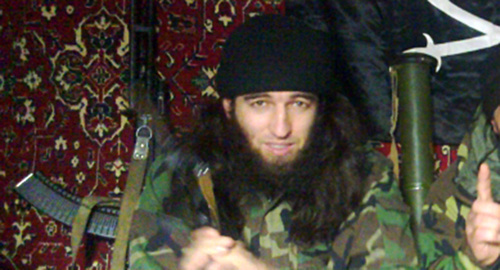
Estimates of the Number of Dagestanis Fighting in Syria Range from 600 to 5,000
Publication: Eurasia Daily Monitor Volume: 12 Issue: 222
By:

Recent reports suggest that the number of foreign recruits to the Islamic State (IS) has increased two-fold over the past year and a half (Gazeta.ru, December 8). At the same time, based on open sources, a group of researchers have found that the flow of jihadist recruits from Russia to the IS has increased three-fold and the number of Russians fighting in the Middle East has reached approximately 4,700 (Rbc.ru, December 8). These figures are estimates and cannot be taken for granted. However, they give some sense of the ethnicity and citizenship of the foreign fighters participating in the Middle East conflict and the relative size of these foreign contingents. In October, Russian President Vladimir Putin said that 7,000 Russian citizens were fighting in Syria (Polit.ru, October 16). In reality, no one knows for certain how many insurgents from Russia are currently in the Middle East.
Residents of Chechnya and Dagestan certainly comprise the largest portion of the Russian citizens fighting in the ranks of Islamic State. It should be noted that the number of recruits from Dagestan has shown a particularly sharp rise over the past two years. At the same time, the flow of Chechens from Chechnya to Syria has significantly dropped in the past 12 months. Much of the decline can be explained by divisions among the Chechen commanders in Syria, who do not coordinate their actions and are often at loggerheads. A majority of those Chechens who joined the IS have become disillusioned with the policies of the so-called caliph. Thus, the decline in the number of Chechen recruits is largely due to what they see in Syria upon their arrival. At the same time, Ramzan Kadyrov has introduced a system of collective punishment in Chechnya, which also dampens support for the IS among Chechens. If a member of a family goes to Syria, the republican authorities will punish the entire family.
According to official Dagestani statistics, only 600 Dagestanis are fighting in Syria. However, Russian journalists say that, according to information learned from the republican police, as many as 5,000 Dagestanis are actually fighting in the Middle East (Gazeta.ru, December 3).
Is this large figure real? It depends on who is considered to have left the republic and in which direction. It appears that the Dagestani police suspect that all residents of the republic who left Russia for Turkey and the Middle East went to join the insurgents. In reality, however, many of the Dagestanis are simply doing business or studying in Turkey and other countries in the Middle East. The figure of 2,000 Dagestani militants in Syria is probably closer to reality. An investigative report by Yelena Milashina for the newspaper Novaya Gazeta suggests though that the problem is quite large. Just from the village of Novosasitli, in Dagestan’s Khasavyurt district, alone, 22 people went to Syria, including three women. Novosasitli’s population is about 2,500 (Novayagazeta.ru, July 29).
Five of the villagers died in Syria and five returned to Dagestan. The authorities launched criminal investigations against all of the returnees, based on Part 2, Article 208 of the Russian Criminal Code covering “participation in an armed group on the territory of a foreign state against the interests of the Russian Federation.” The radicalization of Novosasitli’s residents can be explained by the spread of Salafism in the village, which is known for its Salafist proclivities. However, the number of such villages in Dagestan keeps growing. Milashina concludes that the Russian FSB (Federal Security Service) knowingly allows all willing recruits to leave Russia and join the IS. It is hard to believe the Russian government would adopt such a strategy. Moscow cannot fail to understand that if those people who go to Syria and acquire military experience there before returning to Russia, they will be much more dangerous than those who listen to radical speeches at mosques or via the Internet. The FSB should realize the consequences of people who they let go to Syria and the dangers they pose should they return to Russia (Novayagazeta.ru, July 29).
Meanwhile, to stem the mass exodus of Muslims to Syria, Dagestani members of the Russian State Duma proposed legislation to strip anyone who participates in terrorist activities outside Russia of their Russian citizenship (Kavkazsky Uzel, December 4). At the same time, the Spiritual Board of Muslims of Dagestan is trying to take over those mosques in the republic that have the reputation of being Salafist. The republican clerics, however, have not been entirely successful in doing so (Kavkazsky Uzel, December 3). The republican authorities have also started prosecuting imams who justify terrorism (Kavkazsky Uzel, December 9). Thus, it appears that the authorities are ramping up pressure on the Salafists in the republic.
Over the past several years, the police have been detaining mosque parishioners, whom they suspect of sympathizing with the Syrian militants. The police have detained such suspects at the doorsteps of the mosques, put their names on the list of possible participants of the armed Islamist underground in the republic, and have taken their fingerprints and DNA samples (Chernovik.net, October 2). However, it should not be concluded that these actions are part of an attempt to temporarily reduce the intensity of the struggle in Dagestan by expelling the Salafis to Syria. It would be logical to assume that Russia is interested in sending agents to Syria to collect intelligence on the rebels. But in this case we are talking about individual cases, not about hundreds of Dagestanis leaving for the Middle East.
Still, Dagestan is the main Russian region that appears to be supplying the bulk of militants to Syria and is likely to remain so for quite some time.




